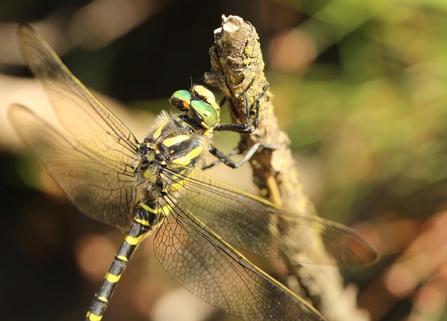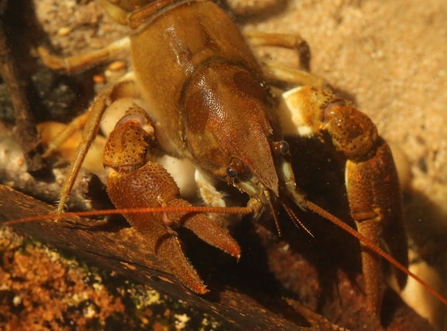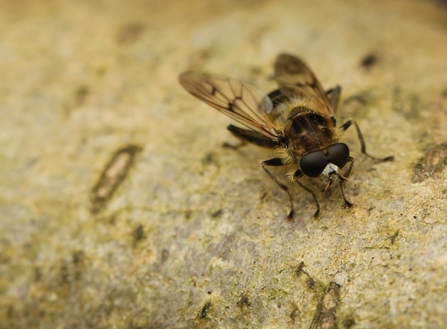The survey gives us a new understanding of the water quality of the watercourses on the Chase and an overall assessment of the condition of the habitats along the stream corridors. The findings will help the Trust and its partners work with landowners to improve stream quality and biodiversity in the National Landscape.Staffordshire Wildlife Trust
Charity led report reveals Cannock Chase streams nationally important strongholds for rare species

Golden-ringed dragonfly by Nick Mott/SWT
The report focuses on surveys of aquatic invertebrates which were carried out in autumn 2023 and spring 2024, after Cannock Chase National Landscape commissioned the Trust to complete the work. The surveys focused on 18 forest streams that drain off Cannock Chase and involved working closely with other ecologists to assess the invertebrate species that call them home.
Nick Mott, River Restoration Manager for SWT, led the survey and authored the report. He said: “The presence or absence of certain invertebrates tells us a great deal about water and habitat quality, highlighting any adverse pressures they face. We worked with expert biologists from Aquascience Consultancy to employ a method known as ‘biometric fingerprinting’ to determine the condition of each watercourse. This method uses aquatic invertebrates to measure the overall water quality of rivers and streams.
“We found negative pressures which include nutrient loading, silt burdens and pesticides. These will all impact the overall health of the watercourses and their inhabitants.”
Out of 11 watercourses surveyed six were rated good-moderate for their invertebrate quality. Four were rated moderate-poor and just one was rated poor.
The main factor causing moderate watercourse scores is sedimentation. Other likely causes are habitat fragmentation due to culverts and pools resulting in
reduced species’ abundance and diversity. Meanwhile, the factors causing poor watercourse scores are pesticides, herbicides and/or complex chemicals, and organic enrichment.
When measured against the various baseline surveys completed between 2014 and 2022, the results of the 2023-24 surveys highlighted improvements in the number of aquatic species present. All of the sites showed variable fortunes for rarer aquatic species during this study period and highlighted both the fragile nature of these watercourses, and the crucial need for ongoing protection and sensitive management.

White-clawed crayfish Nick Mott/SWT
The globally endangered white-clawed crayfish (pictured above) was recorded at six sites during the autumn 2023 and spring 2024 surveys. Additional monitoring carried out by SWT from July to October 2023 and July to October 2024 confirmed the presence of white-claws at three additional sites. Taken together, these populations are of national importance. They are, however, highly threatened by the spread of both American Signal Crayfish and crayfish plague.
Several nationally scarce invertebrate species were also recorded, including the logjammer hoverfly (pictured below), a flagship species associated with saturated wood in clean streams. The nationally scarce White-barred soldierfly was also found.

Logjammer hoverfly male by Nick Mott/SWT
Nick added: “The survey gives us a new understanding of the water quality of the watercourses on the Chase and an overall assessment of the condition of the habitats along the stream corridors. The findings will help the Trust and its partners work with landowners to improve stream quality and biodiversity in the National Landscape.”
A series of recommendations were made as a result of the report, which can be read with the report in full on the Cannock Chase National Landscape website here. Appendices to the report are also linked here: Appendix 1 Autumn 2023 Aquascience Consultancy Cannock Chase and Appendix 2 Aquascience Consultancy Ltd – Staffordshire Wildlife Trust Forest Streams Spring 2024 survey data and metrics.

